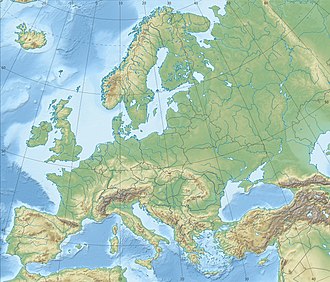This article needs additional citations for verification .(September 2007) |
| Battle of Neuwied (1797) | |||||||
|---|---|---|---|---|---|---|---|
| Part of the French Revolutionary Wars | |||||||
 Battle of Neuwied by Victor Adam, 1836 | |||||||
| |||||||
| Belligerents | |||||||
| | |||||||
| Commanders and leaders | |||||||
| | | ||||||
| Units involved | |||||||
| | | ||||||
| Strength | |||||||
| 35,000 [2] to 38,000 [3] | 21,000 | ||||||
| Casualties and losses | |||||||
| 2,000 killed, wounded and captured | 10,000 (3,000–4,000 dead, 7,000 captured), 24–27 guns, 5–7 colors, 60 wagons | ||||||
Location within Europe | |||||||
The Battle of Neuwied (18 April 1797) saw Lazare Hoche lead part of the French Army of Sambre-et-Meuse against Franz von Werneck's Austrian army. The French attack surprised their enemies and broke through their lines. Aside from 1,000 men killed and wounded, Austrian losses included at least 3,000 prisoners, 24 artillery pieces, 60 vehicles, and five colors. For their part, the French lost 2,000 men killed, wounded, and captured. The losses were in vain because Napoleon Bonaparte signed the Preliminaries of Leoben with Austria the same day. The armistice halted the fighting so that both sides could negotiate a peace. The action occurred during the War of the First Coalition, part of the French Revolutionary Wars.
